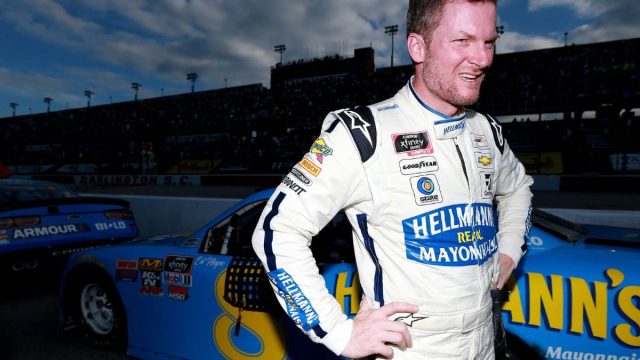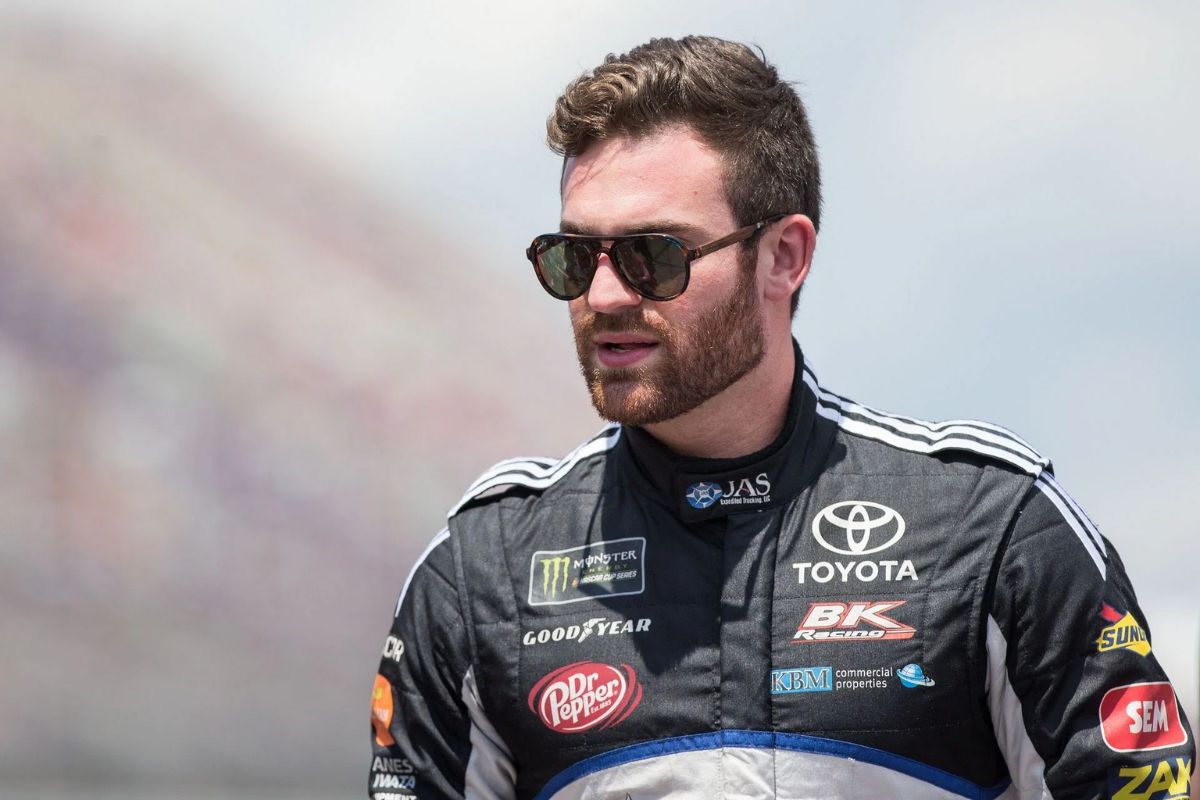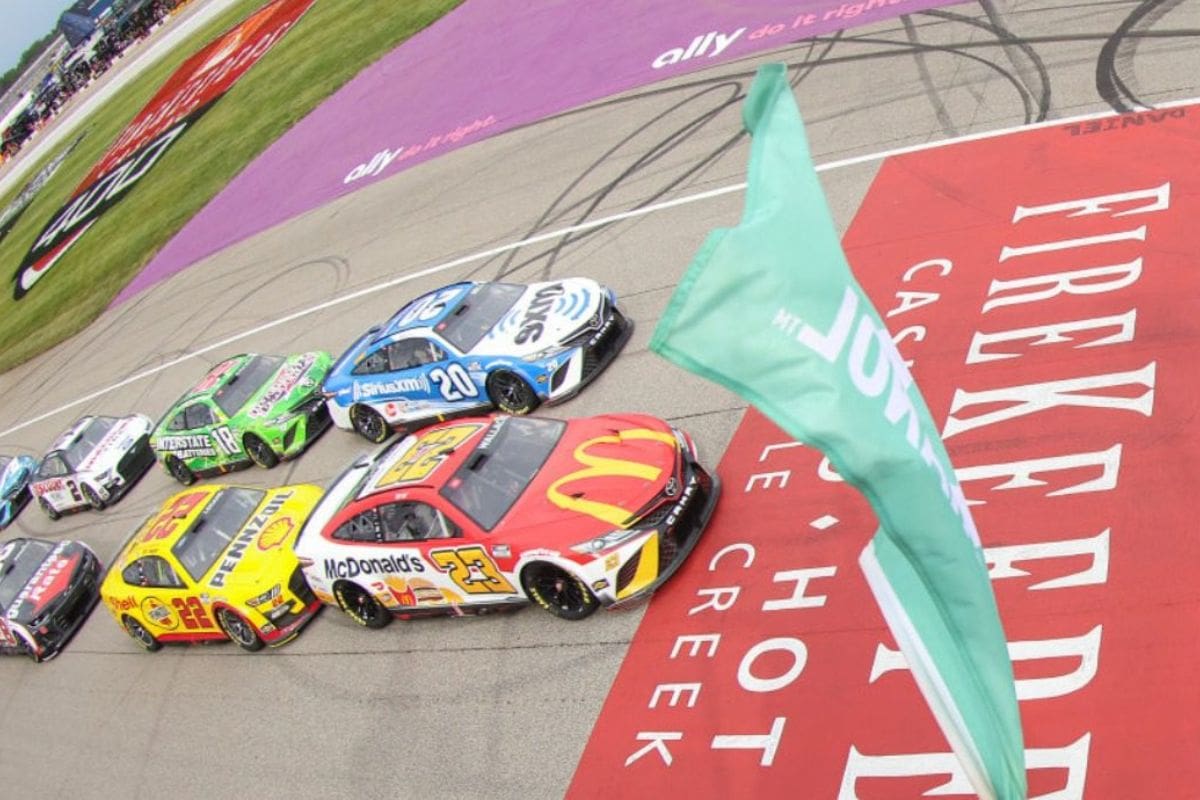Dale Earnhardt Jr. Prefers Flipping Over Dad’s Fate: Dale Earnhardt Jr.‘s frank reflections on the inherent dangers of NASCAR racing reveal a striking willingness to accept risk in ways that challenge conventional wisdom. By suggesting that flipping during a crash might be less dangerous than a direct impact—a view echoed by Denny Hamlin—Earnhardt Jr. invites a critical examination of crash dynamics and safety protocols. This perspective, deeply rooted in his personal experiences, raises significant questions about the evolution of vehicle design and driver safety. As the discussion unfolds, one might wonder how these insights could shape the future of NASCAR safety standards.
Key Highlights
- Dale Earnhardt Jr. believes that flipping during a crash can be less dangerous than hitting a wall directly, as supported by Denny Hamlin’s insights.
- His perspective is influenced by the tragic loss of his father, highlighting the risks of different crash dynamics in racing.
- LaJoie’s flip during a recent race showcases the unpredictable nature of NASCAR, reinforcing the importance of understanding crash scenarios.
- Earnhardt Jr. emphasizes the psychological challenges drivers face, including the anxiety of anticipating impacts compared to the act of flipping itself.
- Continuous improvements in vehicle design and safety measures are essential to protect drivers from severe injuries, including those experienced in the Next-Gen car.
NASCAR’s Dangerous Nature and Corey LaJoie’s Crash
NASCAR, often characterized by its high-speed thrills and intense competition, inherently embodies a level of danger that is difficult to overstate. The sport features V8 engine stock cars that can reach speeds of 200 mph, racing on formidable tracks where precision and aggression intersect. This high-octane environment fosters both exhilarating moments and perilous situations, particularly during the fierce battles for position among drivers. Such scenarios often lead to paint-trading and collisions, as competitors navigate aggressively to secure their place at the front.
Corey LaJoie’s recent crash exemplifies this precarious nature of NASCAR. In his relentless pursuit to establish his identity within the sport, LaJoie found himself embroiled in a high-stakes confrontation. The ensuing crash was not merely a reflection of poor judgment but rather a climax of the inherent risks drivers face each race. The incident serves as a vivid reminder that despite advancements in safety technology, the threat of serious injury remains omnipresent.
Interestingly, Dale Earnhardt Jr. has voiced a perspective that, while acknowledging the risks, suggests that such crashes are not as catastrophic as they may appear. This viewpoint invites a deeper examination of the sport’s culture, where danger is both an accepted reality and a catalyst for the adrenaline-fueled passion that drives competitors.
Dale Earnhardt Jr.’s Perspective on the Crash
The inherent risks of racing are vividly illustrated through the experiences and reflections of veteran drivers like Dale Earnhardt Jr. His perspective on the recent crash involving Corey LaJoie at Michigan International Speedway reveals a detailed understanding of the dangers inherent in motorsport.
Earnhardt Jr. resonates with Denny Hamlin’s assertion that flipping can be less hazardous than making direct contact with the wall, a viewpoint shaped greatly by the tragic loss of his father in 2001.
“Denny Hamlin said on his podcast…he’d rather flip than hit the wall in this car. That makes perfect sense to me. Yes, flips can get violent…people have been killed in cars that get airborne. But the potential for that violent G forces and impact that you tend to feel in wall contact…the potential is a little bit less I think, in a flip.” – jr
Reflecting on the evolution of crash dynamics in NASCAR, Earnhardt Jr. acknowledges that while flips can be violent and unpredictable, the G-forces experienced from wall impacts can often lead to more severe injuries. His commentary highlights a crucial aspect of race safety: the comparison between two perilous scenarios.
With historical context, Earnhardt Jr. recalls notorious wrecks, such as those involving Bobby Allison and Ryan Preece, showing that the sport’s risks are perennial. Yet, it’s the haunting memory of his father’s fatal crash that informs his perspective most profoundly.
Corey LaJoie’s Experience During the Crash
Corey LaJoie’s experience during the recent crash at Michigan International Speedway vividly demonstrates the unpredictable nature of racing. Attempting to overtake Noah Gragson, LaJoie lost control of his No. 7 Chevy, which unexpectedly launched into the air, flipping and sliding along the straightaway for a harrowing 15 seconds.
“That’s just about the way the year’s gone, We have a good car and I find a way to flip it upside down.”
“There’s like rocks and dust and dirt and my eyes are kind of like closed because my stuff, like there’s sparks and stuff hitting me in the face. I’m like why am I getting stuff in my eye here, I’m like, ‘Oh, my visor’s open.’ So I shut my visor and I’m like holding my visor like this, then I hit the wall upside down and the wheel like rips out of my hand and I was like, ‘Oh, shoot, I’m still going pretty fast, let me grab my seatbelts.’ Then I got to the grass and it was like ugh, ugh, ugh. Bigger than a softball size clump of grass landed right in my lap.” – LaJoie’
This event marked the alternate occurrence of such a crash at Michigan, with Kyle Weatherman having a similar fate in the Xfinity series. These incidents prompt a broader discussion about the balance between speed and safety within the sport. While the spectacle of a car airborne may capture the audience’s attention, the reality of such actions raises considerable concerns regarding driver safety.
Dale Earnhardt Jr. provided a commentary, asserting that while the sensation of going airborne is disorienting, the fear of colliding with a wall at high speeds is far more bone-rattling. His insights reveal the layered psychological challenges drivers face.
“As disorienting and unpleasant as getting airborne is…It’s scary to anybody who’s never been in a race car…Heading toward a wall, knowing you are going to hit it at 150 mph is more terrifying and always going to be.” – jr
The anticipation of imminent impact can be more terrifying than the physical experience of flipping. It is this duality—the thrill of competition juxtaposed with the ever-present danger—that defines the essence of NASCAR.
LaJoie’s crash serves as a striking reminder of the unpredictable elements at play and the resilience required of those who choose to compete in this high-octane environment.
The Next-Gen Car and Safety Concerns
In recent years, the introduction of the Next-Gen car has sparked renewed debate regarding safety protocols within NASCAR, highlighting the delicate balance between innovation and driver protection. While safety advancements have historically reduced fatalities, incidents like Corey LaJoie’s recent crash draw attention to ongoing vulnerabilities. LaJoie’s harrowing experience emphasizes the complexities of modern racing, as he navigated a terrifying airborne flip that left him grappling with debris and the physical forces of a high-speed crash.
The evolution of racing safety, particularly after Dale Earnhardt’s tragic accident in 2001, has led to considerable improvements. However, the introduction of the Next-Gen car has reignited concerns over driver safety, as evidenced by Kurt Busch’s retirement due to a concussion in 2022. NASCAR has made strides to address these issues, yet the incidents suggest more work is needed.
Future Safety Improvements in NASCAR
Advancing safety measures in NASCAR is vital as the sport continues to evolve, particularly in view of recent incidents that have raised important questions about driver protection. The recent double mishap in Michigan has highlighted the urgency for improvements in vehicle design and impact absorption capabilities.
Dale Earnhardt Jr.’s observations about the Next Gen car draw attention to a notable concern: the car’s diminished ability to absorb impacts, which must be addressed through creative engineering solutions. NASCAR officials, alongside industry experts, must prioritize the development of crushable structures that can effectively mitigate the forces experienced during high-speed collisions.
“That’s where we always need to be working to improve—the car’s crushability, the car’s ability to take those kinds of impacts. When we worked on the Next Gen car…we know now that the car lost a lot of its ability to absorb. And NASCAR’s working now to reverse that.”
“There were high winds…15-20 mph winds with gusts of 25-30 mph in the direction of getting these cars turned around.” – jr
With the added complexity of external factors like wind, as noted by Earnhardt Jr., the environment in which NASCAR operates can exacerbate risks. This calls for a thorough review of not just vehicle design but also race day conditions and protocols.
The ongoing dialogue surrounding these safety improvements is vital. As NASCAR works to reverse the shortcomings identified in the Next Gen car, collaboration with drivers, engineers, and safety advocates will be indispensable.
News in Brief: Dale Earnhardt Jr. Prefers Flipping Over Dad’s Fate
The perspectives of Dale Earnhardt Jr. and Denny Hamlin on racing dynamics highlight the complexities of safety in NASCAR. By prioritizing unpredictability over the tragic fate of Earnhardt Jr.’s father, a detailed understanding of crash mechanics emerges. The ongoing dialogue regarding the Next-Gen car and its safety implications further accentuates the necessity for continuous innovation in racing protection. Ultimately, these reflections illustrate the intricate balance between risk and safety that defines the sport, shaping its future path.
ALSO READ: Dale Earnhardt Jr. Challenges NFL: Bold Stance on NASCAR’s $7.7 Billion Move



